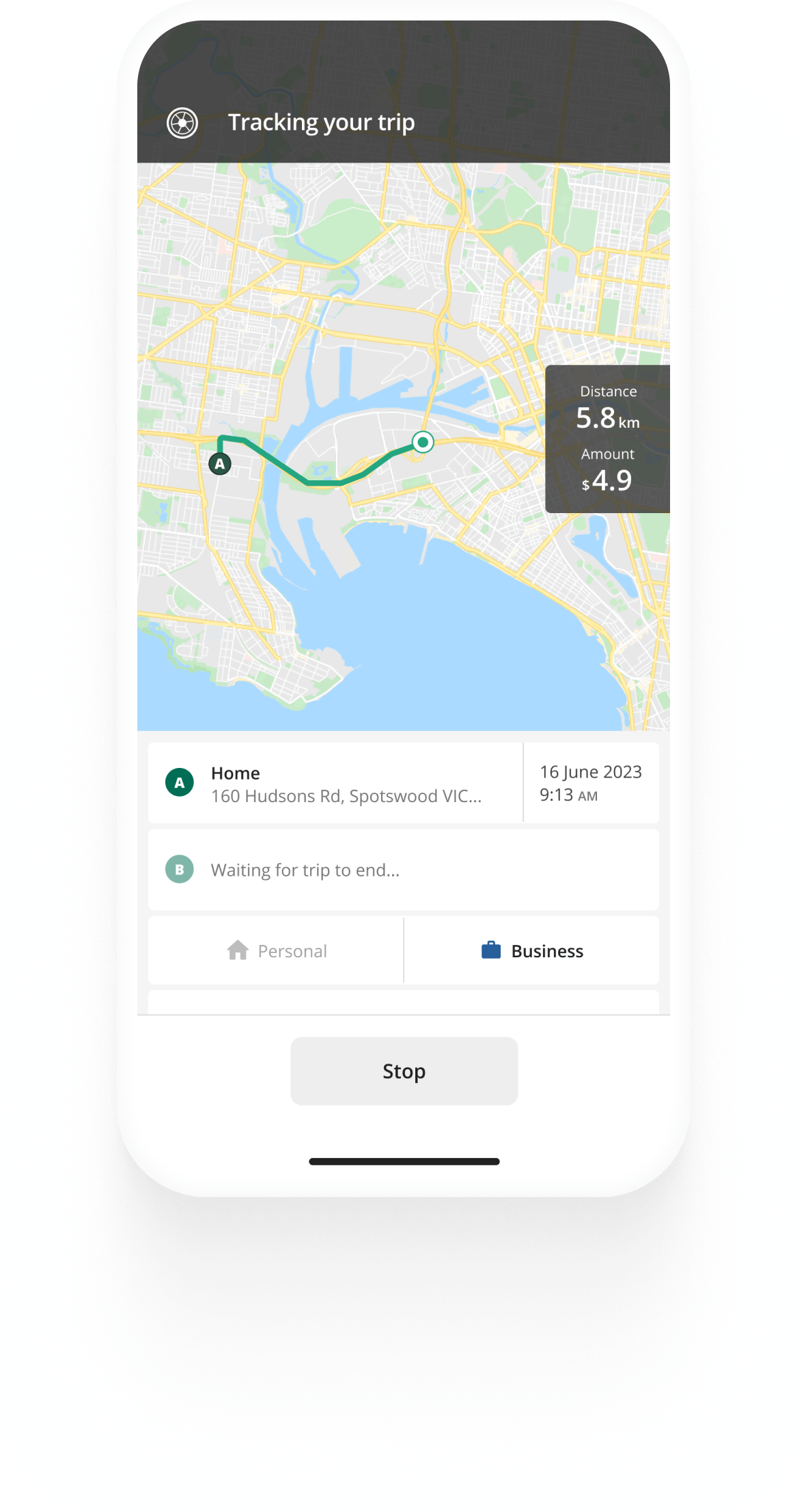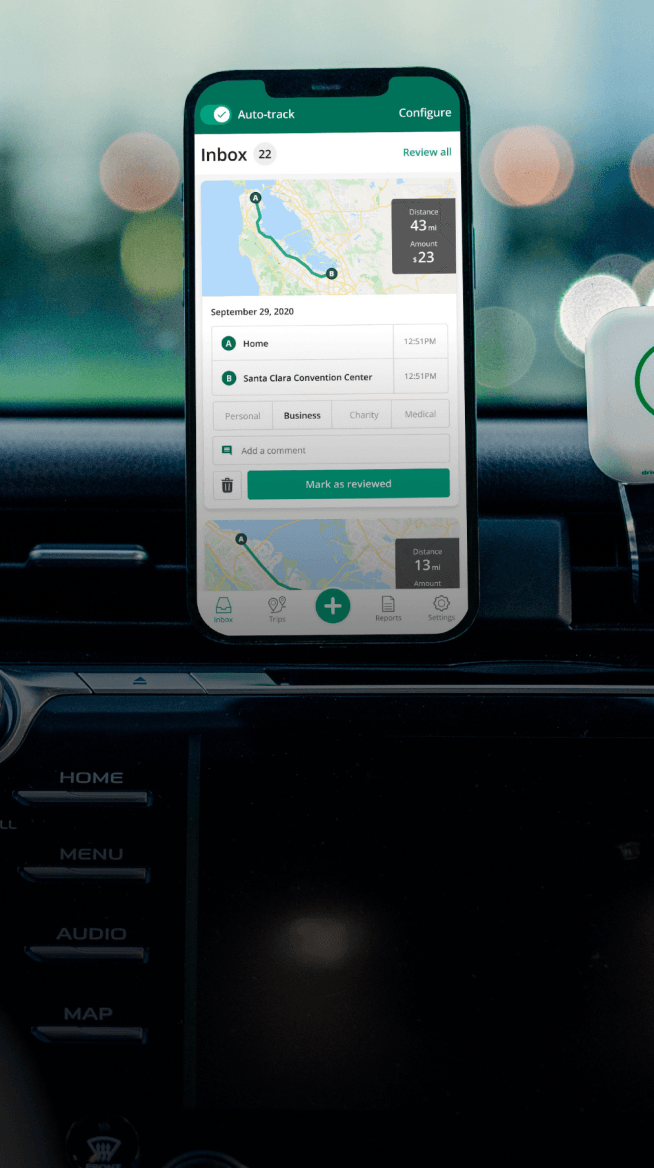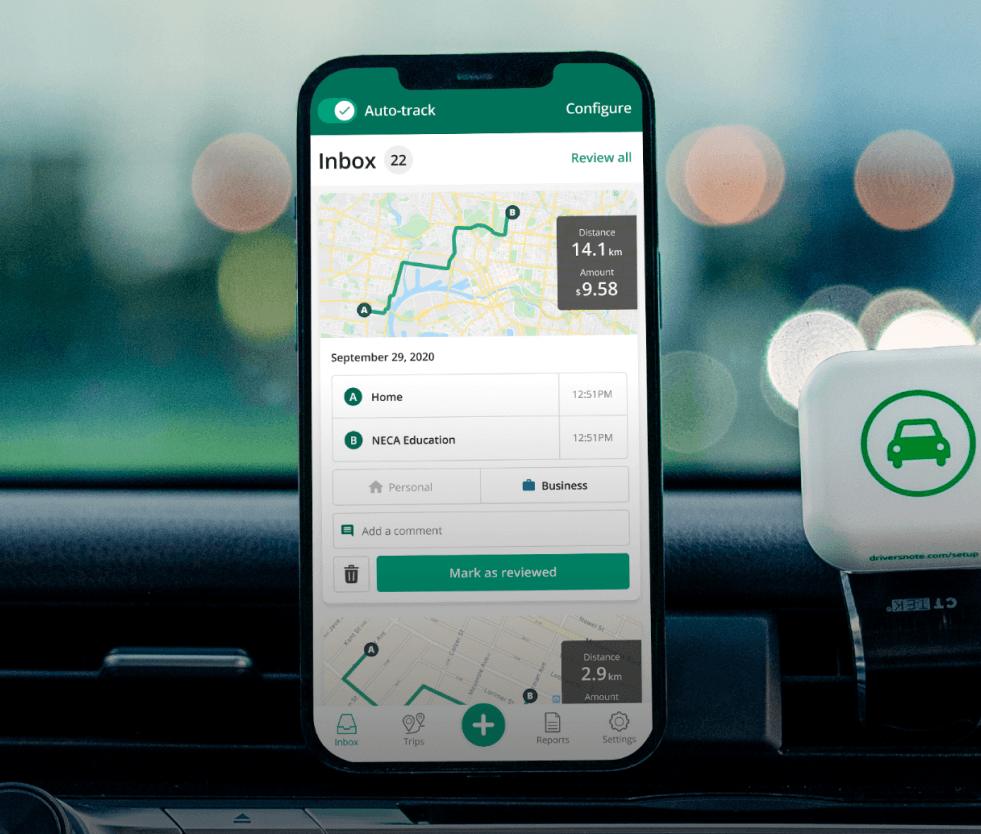Track mileage automatically
Get startedDeducting Car Expenses from ATO - Find The Method for You
In this article
Individuals and companies alike are able to claim work-related car expenses as deductions when completing their tax returns with the ATO if they own or lease a vehicle.
You may be wondering what car expenses you can deduct and how many km you can claim on tax. This guide is intended to help you understand what options are available, and which is the right option for you.
Methods for claiming kilometres on tax
The three ways of working out your ATO car expense deductions are:
- The cents per km method
- The logbook method
- The actual costs method
As an employee, sole trader or part of a partnership, you can use either the cents per km or logbook method if you drive a car - a vehicle that carries less than a tonne and can transport less than nine passengers.
However, if you drive another motor vehicle - a motorcycle, van, or one that can carry a load of more than a tonne, you must use the actual costs method. Companies that want to deduct their ATO car expenses, must also use the actual car expenses method.
Regardless of the method you choose, you will have to keep a vehicle log book. With the Driversnote logbook app you have the tool to ensure every business kilometre you drive is properly logged and categorised.


Kilometre tracking made easy
Trusted by millions of drivers
Automate your logbook Automate your logbook

Automatic mileage tracking and ATO-compliant reporting.
Get started for free Get started for freeWhat car expenses are tax deductible?
You can deduct all car expenses for maintaining and running your vehicle for business purposes. These include:
- Fixed costs - registration, insurance, interest on a motor vehicle loan, lease payments, depreciation
- Variable costs - maintenance, repairs, fuel costs, tyres, oil changes
Additionally, you can also deduct tolls and parking fees.
How many km you can claim on tax
Depending on the method you use for claiming ATO car expenses, this varies.
- If you use the cents per km method, you can claim up to 5000 kilometres per financial year
- There is no limit to the kilometres you can claim expenses for if you use the logbook or actual costs methods
Cents per km claim
The cents per kilometre method of calculating your car expenses is the easiest way to work out your deduction.
The cents per km method provides a standard rate, incorporating all of the costs of owning and operating a car we've listed earlier in the article. Your cents per km claim will amount to the business kilometres you’ve driven, multiplied by the year’s rate. You can claim up to 5000 kilometres per tax year with this method.
The rates are set for each financial year - the 2025/2026 cents per km rate is set at $0.88 per business km, unchanged from the previous 2024/2025 cents per kilometre rate.
You need to keep track of the business kilometres you’ve driven throughout the year. Although you don’t need to submit a logbook of your driving, if the ATO asks you, you must be able to show how you worked out the deduction you are claiming.
It’s important to only claim deductions for eligible kilometres, as the ATO does audit these claims and can request evidence to support them.
The logbook method claim
The logbook method of calculating your work-related car expenses requires a little more work but can add up to a higher deduction - especially if you drive over 5000km business kilometres in a financial year. You can claim all the km you drove in a year by keeping a compliant logbook.
Using the logbook method, your claim is based on the work-related percentage of your car expenses.
Note that you aren’t able to claim capital costs like the purchase price of your car, the principal required for a loan, or any costs related to improving the car (like window tinting). However, you can claim depreciation of your vehicle. See how to calculate and claim your vehicle depreciation.
You will need to calculate the percentage of your total kilometres that are work-related. Unlike the cents per km method, you will need to be able to show a vehicle log book for a period covering at least 12 consecutive weeks, and if your driving fluctuates across a year, many people suggest maintaining a vehicle log book year-round for the best chance of a higher deduction. You can use that same 12-week logbook for the next five years so long as your driving doesn't change much.
You will also need to provide written evidence (receipts and/or invoices) for all of your car expenses, except for fuel and oil which can be estimated based on your odometer readings from the start and end of the logbook period if you don’t have receipts for your actual expenses.
The actual costs method claim
The actual costs method is similar to the logbook method, with stricter recording requirements. There are two main differences between the two. Firstly, reporting your expenses using actual costs requires receipts for all expenses - including fuel and oil. Secondly, a logbook must be consistently maintained, as you must keep records that allow you to calculate the percentage of travel that was for business vs personal use.
In all other areas, the method of calculating your expenses using the actual costs method is identical to the logbook method.
Travel for which you can claim car expenses
To make sure that your ATO car expenses are eligible for tax claim, your travel needs to be specifically for work. Some examples of work-related travel include:
- Attending meetings away from your usual workplace
- Driving to a conference
- Collecting delivering items or supplies
- If you have a second job and you travel directly from one job to the other without going home first
- Travelling from your usual workplace or home to an alternative workplace (like a client’s office or a worksite)
- If your work can be classed as “itinerant work” – for example, if your job regularly requires you to work at more than one location each day before going home
Travel from home to work is generally not claimable, with limited exceptions. Some exceptions include:
- You have to start working from home and then travel to another site to continue working for the same employer
- You have to transport bulky equipment or tools for work - and met all of the following conditions:
- The equipment or tools were required for your duties - that is, that you didn’t just choose to take them with you
- The equipment or tools were bulky - that is, they are awkward to move (because of their weight or dimensions) could only be transported by vehicle
- The equipment or tools were required to be kept at home - that is, there was nowhere secure to store the items at the workplace.
What if my employer has already reimbursed me for car expenses?
If your employer has reimbursed you for your car expenses, you will not be able to claim them as deductions in your tax return. This aims to prevent double-dipping, as an employer who reimburses your expenses is entitled to claim the relevant deductions themselves.
The exception is if you receive a car allowance rather than being directly reimbursed for your specific car expenses. This is because an allowance is treated as taxable income, similar to your salary. If you receive an allowance, you can still follow one of the methods above to claim your tax deduction.
That's it for our guide on the basics of how to claim a tax deduction for your ATO car expenses in Australia. You can read more on how to keep a compliant vehicle log book.
FAQ

Tired of logging mileage by hand?
Effortless. ATO-compliant. Liberating.
ATO Mileage Guide
- For Self-Employed
- For Employees
- For Employers
- The Cents per Kilometre Method
- The Logbook Method
- ATO Log Book Requirements
- Claim Car Expenses In 5 Simple Steps
- Calculate Your Car Expenses Reimbursement
- ATO Car Expenses Deductions
- Car Fringe Benefits Tax
- Is Mileage Reimbursement Taxed?
- Historic Cents Per KM Rates
- ATO Cents Per KM Rate 2021/2022
- ATO Cents Per KM Rate 2020/2021